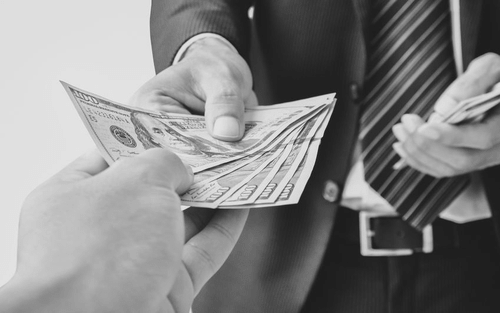The Paycheck Protection Program (PPP) is authorized as part of the $2 Trillion Coronavirus Aid, Relief, and Economic Security (CARES) Act. PPP authorized $349 Billion in forgivable loans to small businesses to pay their employees during the COVID-19 emergency. Loans are forgiven as long as proceeds are used to cover payroll costs, mortgage interest, rent, and utility costs over an eight-week period after the loan is made. The mortgage interest, rent, and utility costs all must have been in place before February 15, 2020, in order to qualify as non-payroll expenses.
The PPP loan is available to small businesses (500 or fewer employees) that were in operation on or before February 15, 2020. Small businesses can begin applying on April 3. PPP loans are available through June 30, 2020, or until funding runs out. (Ed. Note: CARES noted a start date of April 3, 2020. As of April 16, the funding is gone. This is a fluid situation and will likely change by the time this blog is posted.) Sole proprietorships and self-employed individuals can begin applying for PPP loans on April 10. Small businesses can apply for a PPP loan with their existing SBA lenders.
The PPP loan amount can be up to two months’ average monthly payroll costs, using 2019 data, plus an additional 25% of that amount. There is a $10 Million cap for each business. Each business can only apply for one PPP loan. The interest rate is 1.00%. All loan payments are deferred for six months, but interest will accrue during this time. The full loan repayment is due in two years. The full PPP loan should be forgiven unless the business acts in a way that forfeits this forgiveness.
The PPP loan is only available if the business is actively employing its staff. The business’s employees cannot collect unemployment benefits and collect wages from the Clinic which are covered by the PPP loan. For any employment changes made between February 15, 2020, and April 26, 2020, the business must restore its full-time employment and salary levels to match 2019 payroll for any employee who made less than $100,000. Employee compensation may be reduced to 75% (minimum) of 2019 payroll, but it does not have to be reduced.
The PPP loan will be forgiven if the Clinic uses the loan money to maintain or rehire staff, maintain payroll, pay mortgage interest, pay rent, and pay utilities. Only 25% of the loan may be used for non-payroll costs. Non-payroll costs would be mortgage interest, rent, and utilities. This justifies why the Clinic can apply for a loan up to 125% of the 2019 payroll.
Payroll costs specifically do not include qualified emergency sick leave and expanded FMLA benefits under the Families First Coronavirus Relief Act (FFCRA).
There are situations where the PPP loan will not be forgiven or otherwise reduced:
- Owe money when the loan is due if the loan is used for anything other than payroll costs, mortgage interest, rent, utilities over eight weeks after getting the loan. (You will need to itemize your loan disbursement and how it was applied to these costs.)
- Owe money when the loan is due if you do not maintain your staff and payroll.
- Loan forgiveness will be reduced if you decrease your full-time employee headcount.
- Loan forgiveness will be reduced if you decrease salaries and wages by more than 25% for any employee that made less than $100,000 in 2019.
Contact SW&L
If you or your small business need help during these times, please contact us!


